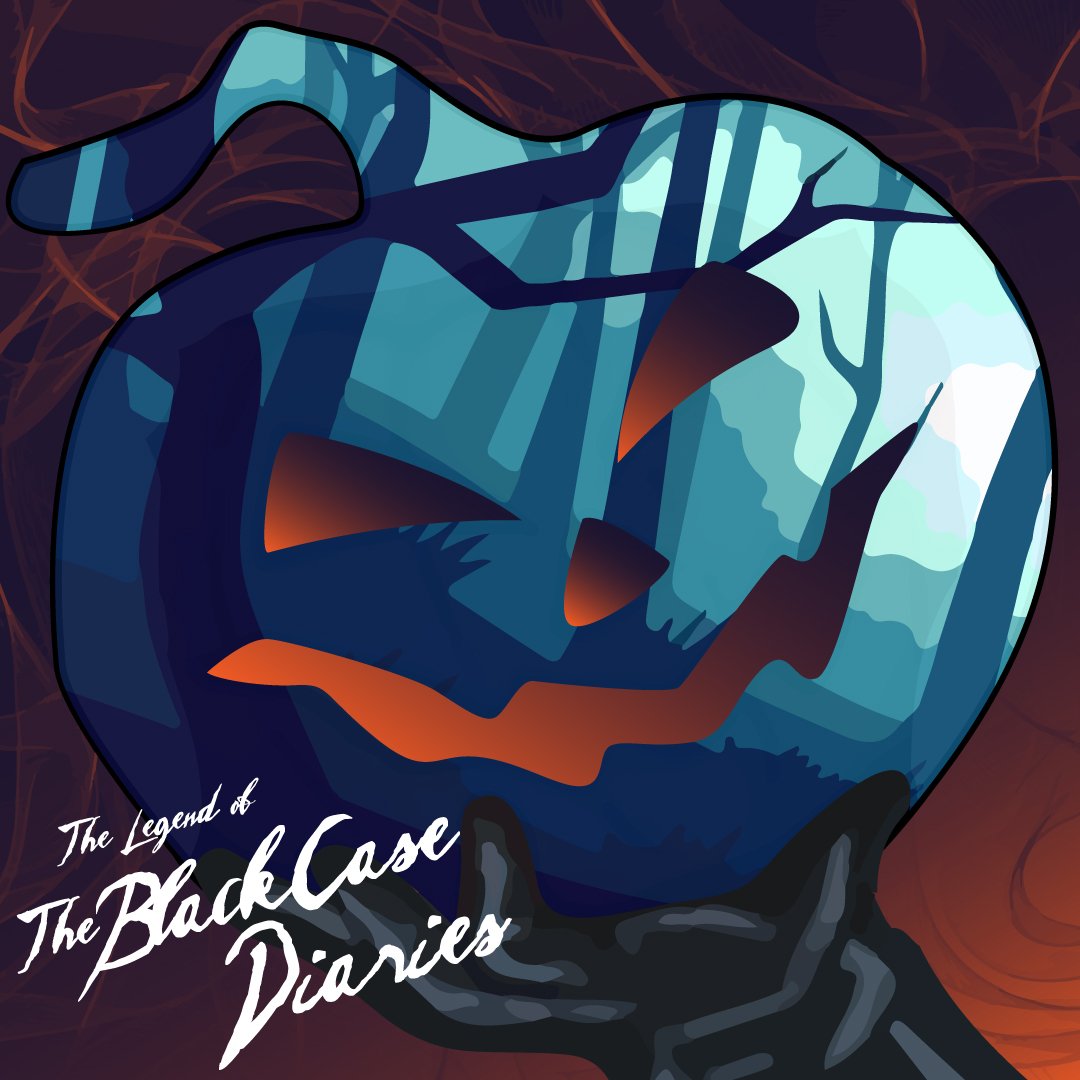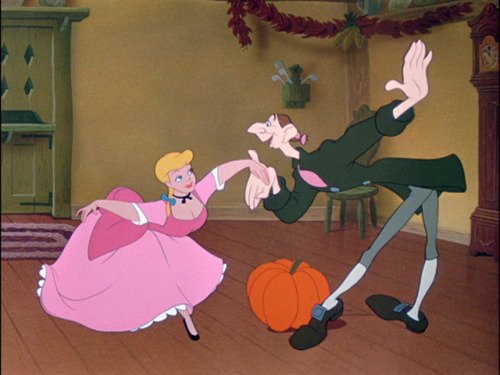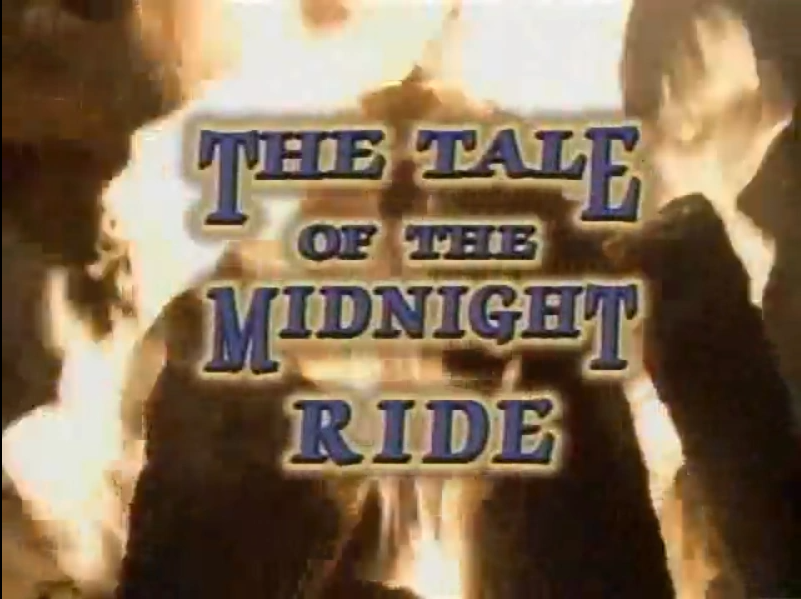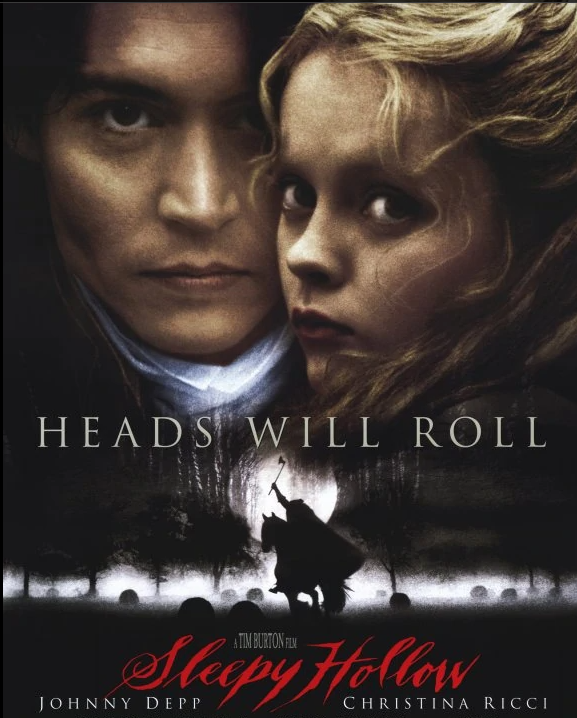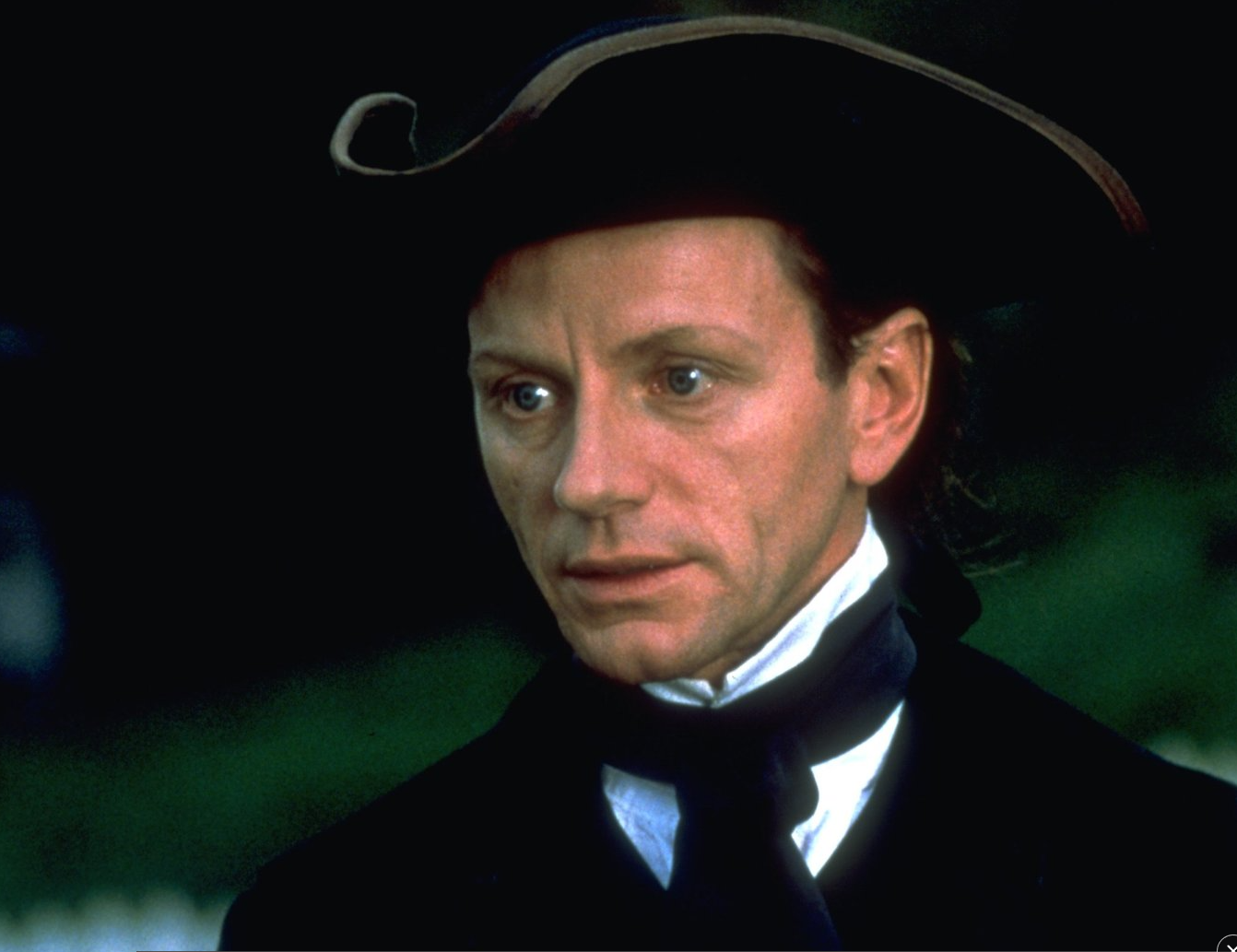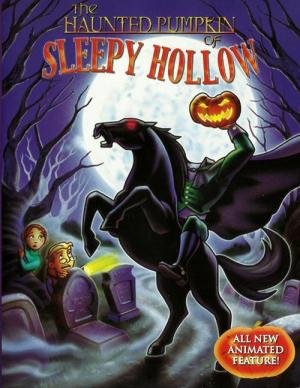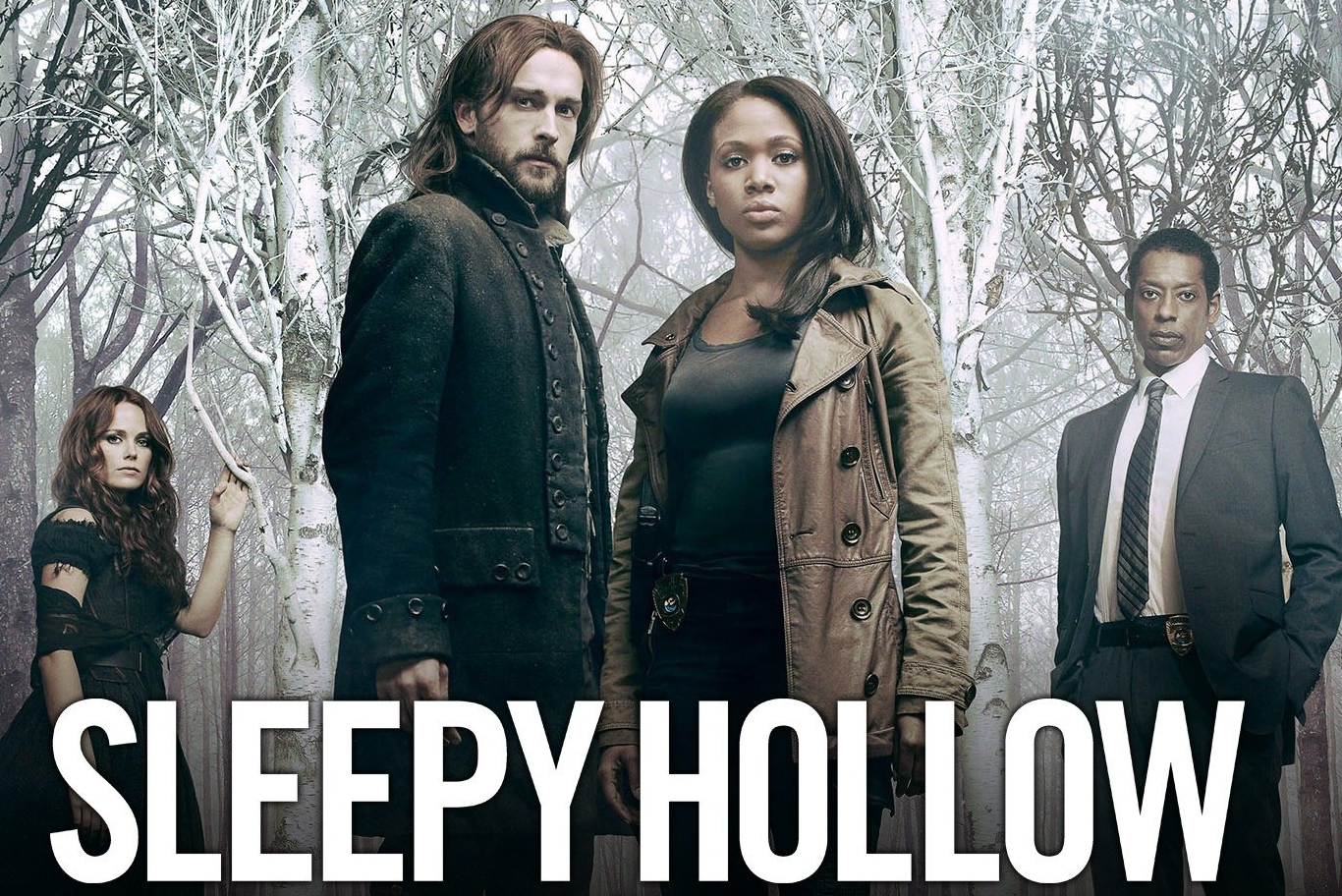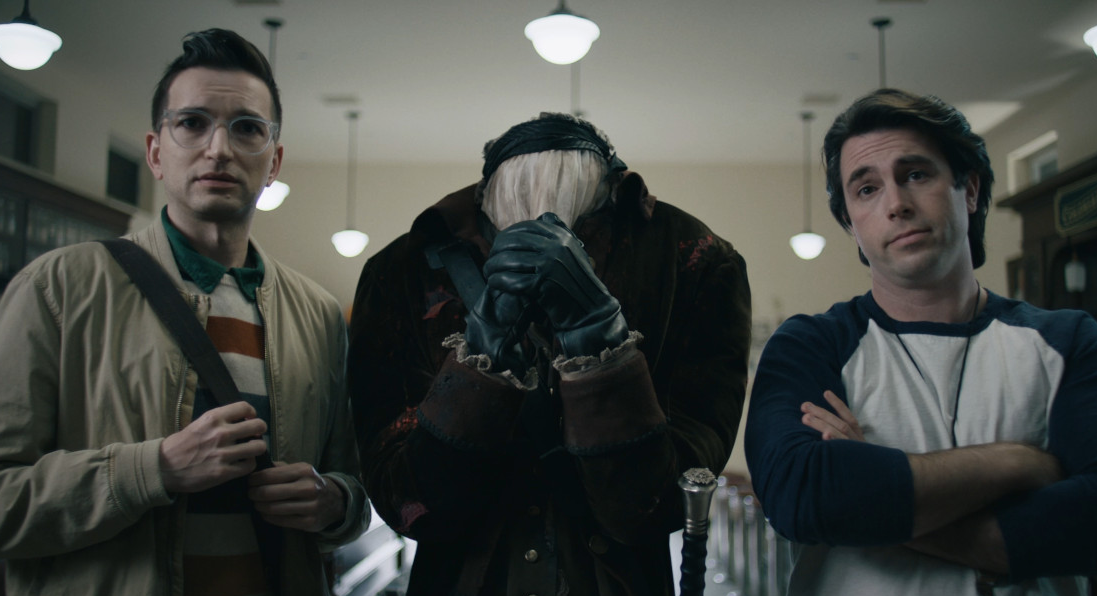The Many Cases of Sleepy Hollow
The summer light is fading, and the cool air of Autumn is in our midst. Stores are placing swimsuits on clearance racks, Spirit Halloween has already set up shop in empty retail spaces, and the evening air smells like wood smoke. So, as we prepare ourselves for the spookiest time of the year, let’s take a look at one of America’s first ghost stories: The Legend of Sleepy Hollow.
Washington Irving’s tale about a schoolmaster and beheaded ghost is one of the most adapted stories in film and TV. We’ve seen the story performed by humans, animals, and even smurfs. This particular tale is deeply rooted in the American experience, and to many, it’s a necessary part of the Halloween season.
So, this week we are taking a look at this staple in American literature, and all the ways that the story has been adapted over the years! So, turn out the lights and gather close by the fireplace, it’s time to hear about the Legend(s) of Sleepy Hollow!
Washington Irving and Sleepy Hollow
Washington Irving was born in New York on April 3rd, 1783. His parents were English and Scottish immigrants, and he was the youngest of 11 children. Irving began writing at an early age, writing essays for a local publication under the pseudonym “Jonathan Oldstyle.” He intended to become a lawyer, and eventually passed the BAR exam (although he himself didn’t think he was a very good student.)
Irving preferred writing over practicing law, and he teamed up with his brother William and a friend named James Paulding to write humorous essays for a periodical called, “Salmagundi.” Continuing with his satirical work, Irving published, “History of New-York from the Beginning of the World to the End of the Dutch Dynasty, by Diedrich Knickerbocker” in 1809. This particular piece of work earned Washington Irving critical acclaim.
It wasn’t until years later, after Irving’s family business failed, that he began writing “The Sketch Book of Geoffrey Crayon, Gent.” Also known simply as “The Sketch Book,” this collection of stories contained what would become two of Irving's most famous contributions to American literature: Rip Van Winkle and The Legend of Sleepy Hollow.
Although Irving was already popular, it was these stories that earned him international acclaim. America may claim The Legend of Sleepy Hollow as its first official ghost story, it’s known by fans all over the world.
The concept of a Headless Horseman was not completely new, as there had long been legends about reaper-like riders that carried their own heads. There are some concrete sources of inspiration, like Sir Walter Scott’s “The Chase” which was published in 1796. This story was a translation of a German poem and is believed to be based on Norse Mythology. The New York Historical Society has another theory, that Irving based The Headless Horseman on a real Hessian soldier that was decapitated in 1776.
In 1798, Washington Irving moved to Terrytown, a village in New York and home of the real life Sleepy Hollow. He may have drawn inspiration from the oral myths and legends shared by locals, and created his own story. Many believe that he based the characters on real people. For example, you can find a tombstone for Katrina Van Tassel in the local graveyard. Colonel Ichabod Crane was a Marine that lived at the same time as Irving, though there is no evidence that the two men ever met.
Irving included real landmarks in the story, like The Old Dutch Church, placing The Legend of Sleepy Hollow firmly in the town in which he lived–and would eventually die.
The Legend of Sleepy Hollow can–and has been–interpreted in many different ways. Some believe that the horseman represents a haunting past that will never die. One thing is for certain, the story–much like the headless horseman–is immortal. Since its first publication over 200 years ago, the story has always remained in print.
The Legend of Sleepy Hollow–A Summary
It’s almost time for school to start for the children of Sleepy Hollow, and the town is excited to meet the new School Master, Ichabod Crane. Sleepy Hollow is a quiet town filled with tall tales about ghosts, witches, and all other manner of supernatural happenings. The most terrifying ghost of all is that of The Headless Horseman, a former soldier that had his head blown off by a canon. Legend says that the horseman rode his black horse at night, looking for a head to replace his own.
Ichabod Crane has decided to court Katrina Van Tassel, the daughter of a wealthy farmer. Crane has a rival, though, named Abraham Van Brunt AKA Brom Bones. Bones has scared off every suitor for Katrina, though Ichabod refuses to stop pursuing her. One night after having dinner with the Van Tassel family, Ichabod attempts to ride home. He sees a dark figure on the path that begins to chase him. Ichabod recognizes the man as The Headless Horseman and attempts to escape. He reaches the bridge that the horseman cannot cross, and the ghost hurls something at Ichabod, knocking him off the horse. The next morning, Ichabod is nowhere to be found. His horse is at home, and the only traces of the schoolmaster are his hat, some hoof prints, and a shattered pumpkin.
The Headless Horseman (1922)
The first film adaptation of the story was “The Headless Horseman” in 1922. The film was directed by Edward D Venturini and starred Will Rogers as Ichabod Crane. Apparently, there were three film adaptations made during the silent film era, but this was the only one to survive.
Carl Stearns Clancy wrote the adaptation. He was a producer that often worked with Will Rogers, which explains why Rogers stars in this film.
Will Rogers was an incredibly popular humorist and actor, and this role seemed to counter his lovable persona. In this version, Ichabod Crane is somewhat of a cruel teacher, and many of the townsfolk would like to see him gone.
The Headless Horseman is famously slow-paced, lasting about 75 minutes. It was groundbreaking, however, because it was the first movie shot on panchromatic film, meaning that it was sensitive to all shades and colors. Before that, studios used orthochromatic film, which made certain colors appear as bright white instead of gray.
Though this film is a great watch for movie historians, it might not be the best one to start with if you’ve never seen any adaptations.
If you are interested in watching the film, you can find the link in our blog.
The Headless Horseman (1934)
Before Walt Disney retold the story of Ichabod Crane, his former collaborator and Mickey Mouse co-creator Ub Iwerks created a short called “The Headless Horseman” in 1934.
Carl Stalling’s music accompanies the animation. He composed for many of Iwerks’ Silly Symphony shorts, which gave this short a similar “silly” feeling. The characters are more comical, and the story isn’t nearly as terrifying. There is also no narration or speaking roles, and much of the physical comedy mirrors popular comedians of the time, like The Three Stooges.
Iwerks would return to Disney Animation years later and actually worked on the Special Effects Team for Ichabod and Mr. Toad.
We will link to the 1934 short in the blog if you are interested in watching it!
The Adventures of Ichabod and Mr. Toad (1949)
In 1949, Washington Irving’s most famous ghost story found a new audience with the release of Disney’s animated classic: Ichabod and Mr. Toad. This film contains two short stories, one of them based on The Wind and The Willows, and the other on The Legend of Sleepy Hollow.
Apparently, Disney wanted both of these stories to be full-length films, but they decided they did not have enough material. They combined the two so that the plots did not feel stretched. However, this did lead to some cuts for Mr. Toad’s half of the movie.
For many children, this animated retelling was their first exposure to the story, keeping it at the forefront of American culture. It was the 11th Disney Animated Classic, and the final film of Disney’s wartime era, when the films were compilations of shorts instead of full-length features.
The film was directed by James Algar, Clyde Geronimi, and Jack Kinney. The Sleepy Hollow half of the film is narrated by Bing Crosby. Along with his singing voice, there is sometimes an accompanying chorus. Other than that, his voice is pretty much the only one you hear in the story. After the release of the film, Disney also produced a vinyl with the same story and songs. This time, however, it was narrated by Thurl Ravenscroft.
This adaptation is fairly true to the original story. Although Ichabod appears to be the protagonist, Disney made it clear that he pursued Katrina Van Tassel partially for her money. The film also didn’t shy away from dark material, and Disney reportedly still gets complaints about the song that Brom Bones sings about the Headless Horseman, saying that it’s too scary for children.
Animator Andreas Deja says that he pulled inspiration from Brom Bones for Gaston’s character design in Disney’s Beauty and the Beast.
The Legend of Sleepy Hollow (1980)
In 1980, NBC premiered a made-for-TV film adaptation of The Legend of Sleepy Hollow. Filmed in Utah, it was produced by Sunn Classic Pictures as a part of their “Classics Illustrated'' series. It starred Jeff Goldblum as Ichabod, Meg Foster as Katrina, and Dick Butkus as Brom Bones.
In a wild change from the original story, the film ends with Ichabod making it to Katrina’s house and the Headless Horseman returning to the forest. This version also introduced an original character named Thelma Dumkey. Just as Ichabod is a rival of Brom Bones, she is a rival to Katrina for Brom’s affections. The people of Sleepy Hollow
Directed by Henning Schellerup, a prolific cinematographer and director, this is a charming adaptation filled with painted backgrounds and a foreboding score by Bob Summers (who scored Sailor Moon!)
This movie is somewhat difficult to find, but you might be able to snag a glimpse at a young Jeff Goldblum if you search for it on YouTube! Here’s a LINK for easy access.
The Legend of Sleepy Hollow (1985)
Shelley Duvall’s tall tales and legends was a short-lived tv series that aired in September of 1985 with nine episodes. Duvall was the creator behind this show and also served as Executive Producer and Presenter, following her success with her first anthology series, Faerie Tale Theatre.
Directed by Edd Griles, this version keeps pretty close to the original tale. Ed Begley Jr. stars as the schoolmaster Ichabod. Beverly D'Angelo as Katrina Van Tassel, Charles Durning as the Narrator, Tim Thomerson as Brom Bones, and more. The series was nominated for a Primetime Emmy Award and was succeeded by another anthology series, titled Nightmare Classics.
One of the major differences from the original story is that this adaptation definitively shows that Brom Bones was in fact the headless horseman and simply ran Ichabod out of town. This is implied in the original story, but is not explicit.
The Legend of Sleepy Hollow (1988)
In 1988, Glenn Close narrated a version of the story for Windham Hill Records that would later have visuals added as part of Storybook Classics for Rabbit Ears Entertainment. It was also released on audio cassette and CD and is still available digitally as part of an album that also contains seven short music tracks. Here’s a LINK to this version to listen to!
There were several other albums released that told The Legend of Sleepy Hollow. Thurl Ravenscroft and Boris Karloff both narrated versions, one of which Robin listened to as a child!
The Tale of the Midnight Ride (1994)
We’ve discussed this before, but we knew that we couldn’t talk about The Legend of Sleepy Hollow without bringing up Are You Afraid of the Dark again. As a reminder though, the original series was a horror anthology TV show geared towards children in the 90’s. In the first episode of season 3, we’re treated to another re-telling of The Legend of Sleepy Hollow by Tucker, the newest member of the Midnight Society.
This episode was written by Darren Kotania and Director, DJ MacHale. It takes place in a modern Sleepy Hollow where the legend from 1700 (and whatever) is said to reoccur every year at Halloween with a ghostly Ichabod Crane and the Headless Horseman. This modern take adapts the general story fairly well, except Ichabod (Ian in the episode) is a new kid at school and his rival is on the football team. Brad, the Brom Bones of the story, dresses up at the headless horseman to scare Ian away. Of course, the real Headless Horseman shows up to the party as well.
Wishbone Halloween Hound: The Legend of Creepy Collars
Wishbone was an adorable Jack Russell Terrier that would envision himself as characters within classic literature. The show on PBS only lasted for two seasons in the 90’s but was one of most beloved dogs on television.
The classic stories that were told usually went along with a lesson that Wishbone’s owner, Joe, learns. In this episode Joe and his friends David and Sam participate in a Halloween Scavenger Hunt. He is worried about his luck and whether or not an old house is haunted or not. Wishbone plays superstitious Ichabod Crane.
This episode is a great introduction to the story for young kids, and you can find it on YouTube! Larry Brantley voiced Wishbone. He’s a stand-up comedian and voice actor.
Sleepy Hollow (1999)
Perhaps the most popular modern adaptation of this story is Tim Burton’s Sleepy Hollow from 1999. This film follows Ichabod Crane, who has been sent to the town of Sleepy Hollow to investigate a string of murders. The culprit appears to be the wretched apparition: The Headless Horseman.
The screenplay was written by Kevin Yagher, a celebrated make-up and special effects artist that was partly responsible for Freddy Kruegar’s iconic look; and Andrew Kevin Walker, a horror writer who wrote for the film Seven.
In true Tim Burton fashion, this film stars Johnny Depp as Ichabod Crane. Christina Ricci plays Katrina Van Tassel, Miranda Richardson plays Lady Van Tassel, Casper Van Dien plays Brom Van Brunt, and (spoiler) Christopher Walken plays the Hessian Horseman.
The movie varies from the story greatly in plot, but also in character design. Johnny Depp reportedly wanted to wear prosthetics so that he would look more like the homely Ichabod Crane and less like a 90s movie star.
Production designer Rick Heinrichs developed the creepy and foreboding sets that we see in the film. You may remember his name because he has worked with Tim Burton on many of his films, as well as some major blockbusters such as Captain America.
Danny Elfman composed the score for Sleepy Hollow. The composer has said that he enjoys working with Tim Burton because the director doesn’t speak in musical terms, but uses emotions to describe what he wants.
During its debut, the film was not Tim Burton’s biggest success, but it was also not a flop. Internationally, it made twice its estimated budget of 100 million dollars. The film has found a strong following in recent years, as many consider it to be one of Burton’s best films and a beautiful example of visual storytelling. Sleepy Hollow pulls off being a horror period piece with just enough humor to keep the audience in good spirits. Its sets and imagery are top-notch, setting a whimsically horrifying tone–the kind of filmmaking for which Tim Burton is known.
The Legend of Sleepy Hollow (1999)
This may surprise you, but the Hallmark Hall of Fame actually makes films about holidays other than Christmas! Their version of The Legend of Sleepy Hollow also premiered in 1999, like the Tim Burton film. This one, however, was made for TV.
The film starts with Washington Irving visiting some men in a tavern in “Terrytown.” Terrytown is the home to Sleepy Hollow and is where Irving lived. In this intro, the traveling Irving is looking to gather local stories and legends for a book he is writing. The men in the tavern begin telling Irving the tale of the Headless Horseman.
Of the version we watched for this episode, this was the first one to have this kind of framing. It was a nod to fans of the original story. This version was one of the most true to the original tale, though Disney’s version is pretty on-the-money as well.
The Legend of Sleepy Hollow stars Brent Carver and Rachelle Lefevre. It was directed by Pierre Gang and written by Joe Weisenfeld who also wrote the CLASSIC TV mini series of Anne of Green Gables (1985).
In the original story, Washington Irving hints that Brom Bones, Ichabod’s rival, scared the schoolteacher away by pretending to be the Headless Horseman. In this film adaptation, we see that Brom Bones does in fact intend to scare Ichabod away, but then the real Headless Horseman appears.
The Haunted Pumpkin of Sleepy Hollow (2003)
The Haunted Pumpkin of Sleepy Hollow is an adorable animated film that gives a little twist to the story by having two friends, Nick and Kate pick out a Halloween pumpkin that unbeknownst to them, at first, is haunted by the Headless Horseman. It became haunted after two thieves hid Irving’s original story within the pumpkin while being chased by a security guard.
The remainder of the film follows the kids as they must keep the pumpkin head away from the horseman until midnight so he does not regain all his powers back.
It was a direct to video creation but may be remembered fondly by those that saw it briefly for a few years when Cartoon Network showed it.
Sleepy Hollow (2013-2017)
Sleepy Hollow was a popular television show that lasted four seasons on FOX.
Ichabod in this iteration is a soldier in the Revolutionary War and is the one to decapitate the Horseman. After suffering a mortal wound during combat, Ichabod passes out, only to wake nearly 250 years later in the same town. Ichabod soon discovers that his awakening also brought about The Headless Horseman. Ichabod pairs up with a police officer to keep the horseman (and anything else supernatural) at bay.
The show stars Tom Misen, Lyndie Greenwood, and Nicole Beharie as they battle the forces of evil. The show started with a large audience, but faced several issues with changing show-runners and what critics called, sloppy writing. The show also faced a lot of criticism for how it treated its characters of color.
It was filmed in Wilmington, NC, one of the most haunted towns in America.
The Legend of Smurfy Hollow (2013)
In 2011 Columbia Pictures brought back The Smurfs, but in live action with CGI versions of the titular blue characters. Sony Pictures Animation followed this movie up in 2013 with a direct-to-video Legend of Smurfy Hollow. It begins in CGI making you think the entire 22 minute short will be in that medium. Thankfully though, it switches to a classic and sweet 2D version of The Smurfs.
Although not a direct retelling of Irving’s story it uses the Headless Horseman in a ghost story that has a very direct message of loving your family. Also in this adaptation, The Headless Horseman is not a real entity, but instead a smurf ghost story.
The beginning of this short-film features Tom Kane as the voice of “narrator smurf.” Kane has had a prolific career, lending his voice to many documentaries, The Power Puff Girls and Star Wars: The Clone Wars, just to name a few.
Headless: A Sleepy Hollow Story (2022)
This 10-part series is the newest and final one on our list. Currently, as of recording, only the first four episodes are up on Youtube. The Independent Studio responsible for this series, Shipwrecked Comedy, is located in Salem Massachusetts.
The studio prides itself on blending comedy, dry humor, history, and literature.
In this short series Ichabod is new to town as the middle school science teacher. When his landlord decides to charge him more than they agreed upon, he must find a roommate. Things get interesting when the Headless Horseman himself wants to be Ichabod’s roommate. The pair make a bargain for rent pay in exchange for finding the horseman’s head.
Well, that’s all of the versions of Sleepy Hollow that we found so far! Did we miss any? Please let us know!
Autumn is here, and with it comes the urge to cuddle up and listen to a great ghost story. The Legend of Sleepy Hollow will always have a place around our campfires and on our TV screens. Some may see it as a tired story that’s been played out too many times, but, this is a tale that has truly withstood the test of time. It’s a story that connects everyone that’s ever heard it, told it, or watched it.
There’s a kind of magic to The Legend of Sleepy Hollow. No matter how old we become, it pulls us in, making us feel like we’re there, desperately fleeing The Headless Horseman, and for just a moment, we’re spirited away into the world that Washington Irving built.
Sources:
https://www.britannica.com/biography/Washington-Irving
https://www.history.com/news/legend-sleepy-hollow-headless-horseman
https://tvtropes.org/pmwiki/pmwiki.php/Franchise/SleepyHollow
https://www.youtube.com/watch?v=jt1GWHS7zZE
Headless Horseman (1922) https://www.youtube.com/watch?v=bNjoCeesc5w
https://tvtropes.org/pmwiki/pmwiki.php/WesternAnimation/TheHauntedPumpkinOfSleepyHollow

